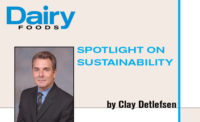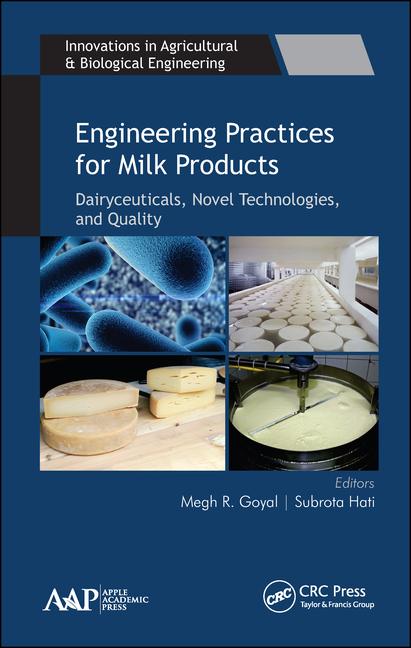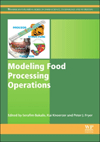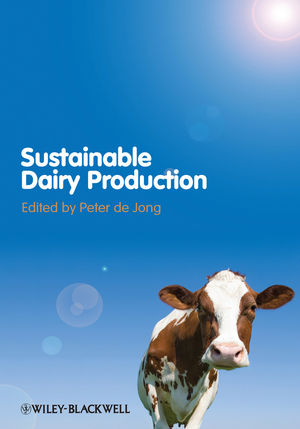Whether you own a dairy farm or run a dairy processing plant, the one certain sustainable best practice should be improving the efficiency of your lighting. And while early adopters jumped on compact fluorescent lights (CFLs), today the visibly superior product is the light emitting diode bulb, more commonly known as an LED. In my mind, LEDs, while costing more initially, are far better and more cost-effective in the long term.
According to the Environmental Protection Agency, both CFL and LEDs use about 80% less energy than incandescent bulbs. The agency states that a traditional incandescent bulb will cost about $7.32 per year to use, while a CFL will run about $1.57, and the LED will be about $1.50.
The real benefit is the long lifespan of the bulbs. CFLs last about six times longer than incandescent, but an LED will last 25 times as long. Over the life of the bulb, the savings are about $40 per bulb for a CFL and $70 for an LED bulb. Also, LEDs contain no mercury while CFLs have about 4 mg per bulb.
Years ago, Walmart had a lighting program by which it would help evaluate its suppliers’ electricity usage. Walmart experts knew before going into the evaluations that lighting was low-hanging fruit, and with some easy changes, changing bulb types could cut 1-2% off a food processor’s electric bill.
The Innovation Center for U.S. Dairy, Rosemont, Ill., also found that lighting changes on dairy farms are an easy way to save electricity. After conducting 700 energy audits nationwide between 2008 and 2014 with EnSave Inc., the savings at an average farm (450 cows) from lighting changes are about 23,000 kWh per year. The Innovation Center envisions that if 9,000 dairies would do audits and/or improve their lighting, it would save 207 million kWh per year.
After lighting, other areas for improvement are milk cooling, ventilation and advances in milk harvesting. In terms of energy usage at a U.S. dairy farm, lighting accounts for 14%, milk cooling 13%, ventilation 19% and milk harvesting about 10%. While pumps and motors come in fairly high at 27%, the opportunities for improvement in this area are not as great as the others.
The Innovation Center’s farm energy audit program is ongoing, so there are more opportunities ahead and more is to be learned. In addition, the Innovation Center will soon be releasing version 2.0 of its Farm Smart tool, (see sites.usdairy.com/farmsmart/Pages/Home.aspx ), which has an energy module that will provide producers with a detailed understanding of their energy use and better management to lower energy and operating costs.
Can we learn from the Kiwis?
Not wanting to be outdone by the U.S. Innovation Center, the New Zealand dairy industry has also looked at farm energy. The New Zealand Energy Efficiency and Conservation Authority (EECA) has launched the Dairy Farm Energy Efficiency tool, which compares a dairy farm’s electricity use to other dairy farms in New Zealand, and to global best practices. The EECA is New Zealand’s government agency that works to improve the energy efficiency of New Zealand’s homes and businesses, and encourage the uptake of renewable energy.
The creation of tools to assist dairy producers with their energy use appears to have become a best practice. In part, the genesis of the New Zealand tool came from a 2011 determination that New Zealand’s 12,000 dairy farms were using $250 million worth of electricity. The EECA believes that adopting energy-efficient technologies could cut $40 million.
Unlike here, New Zealand found that half the energy was used on water heating and pumping, 17% was for refrigeration and 15% was for vacuum pumping. The suggested best practice was to focus on heating and cooling improvements and use solar water-heating technologies. Oddly, electricity use for lighting on New Zealand farms came in at about 4% of the total bill, quite different from what we see here.
So instead of a lighting focus, the New Zealand agency suggests focusing on recovering heat from the chilling equipment (which could cut the electric bills by up to 30%), using variable-speed pumps to cut another 10% to 15% and finally adding insulation to squeeze out another 3% to 6% savings.
Here comes the sun
A different case study by EECA strongly advocates the use of solar energy (again primarily thermal), and notes that approximately 140,000 kWh of solar energy falls on the average dairy farmshed. Clearly New Zealand’s government is advocating solar technology as a best practice.
While we don’t see many folks advocating solar technologies for farms or processors here in the United States, I suspect that is coming soon due to a lot of changes in the solar industry, and improvements in the technology and in solar business models. Within 10 years, solar power generation, primarily photovoltaic, will be a best practice in the U.S. dairy industry and it will be widespread.
Sustainability best practices in the dairy industry vary widely depending on where you are and whether you produce or process milk. And they include things you might not think of as a best practice, like the development of online “what if” tools. At its most elemental, sustainability can be as simple as switching out light bulbs.






